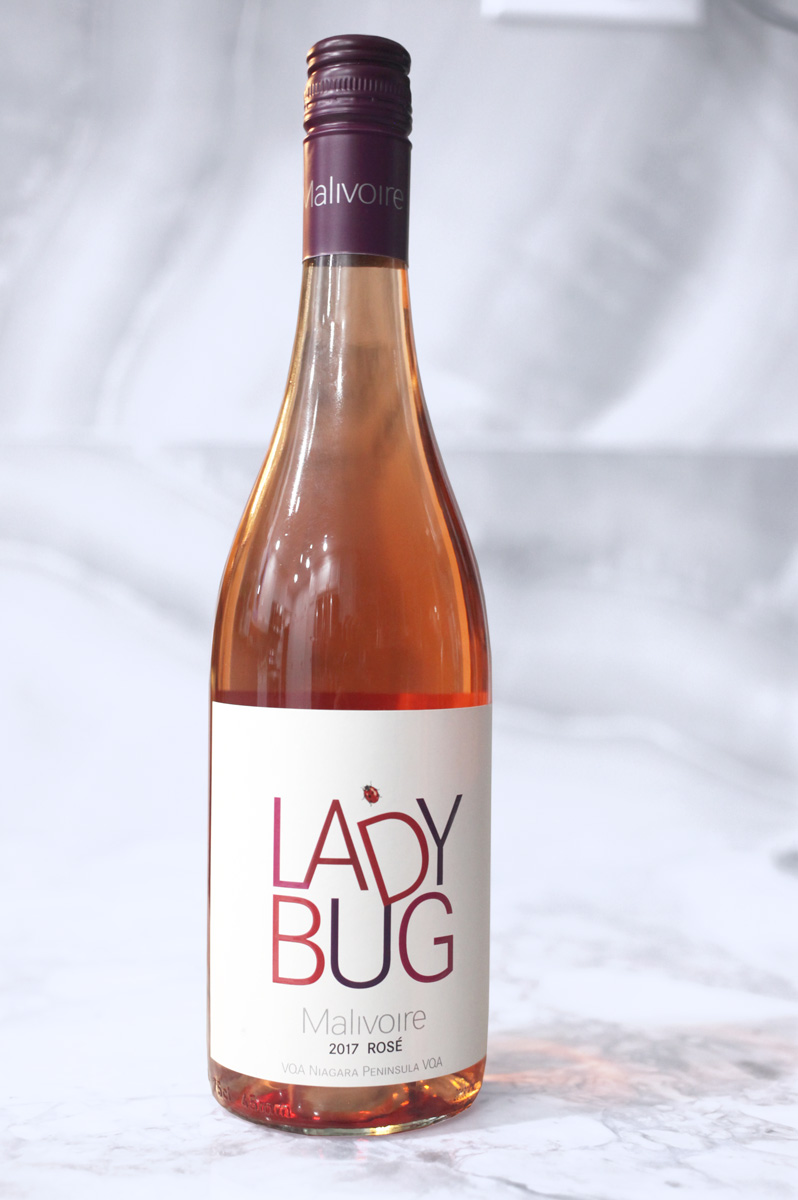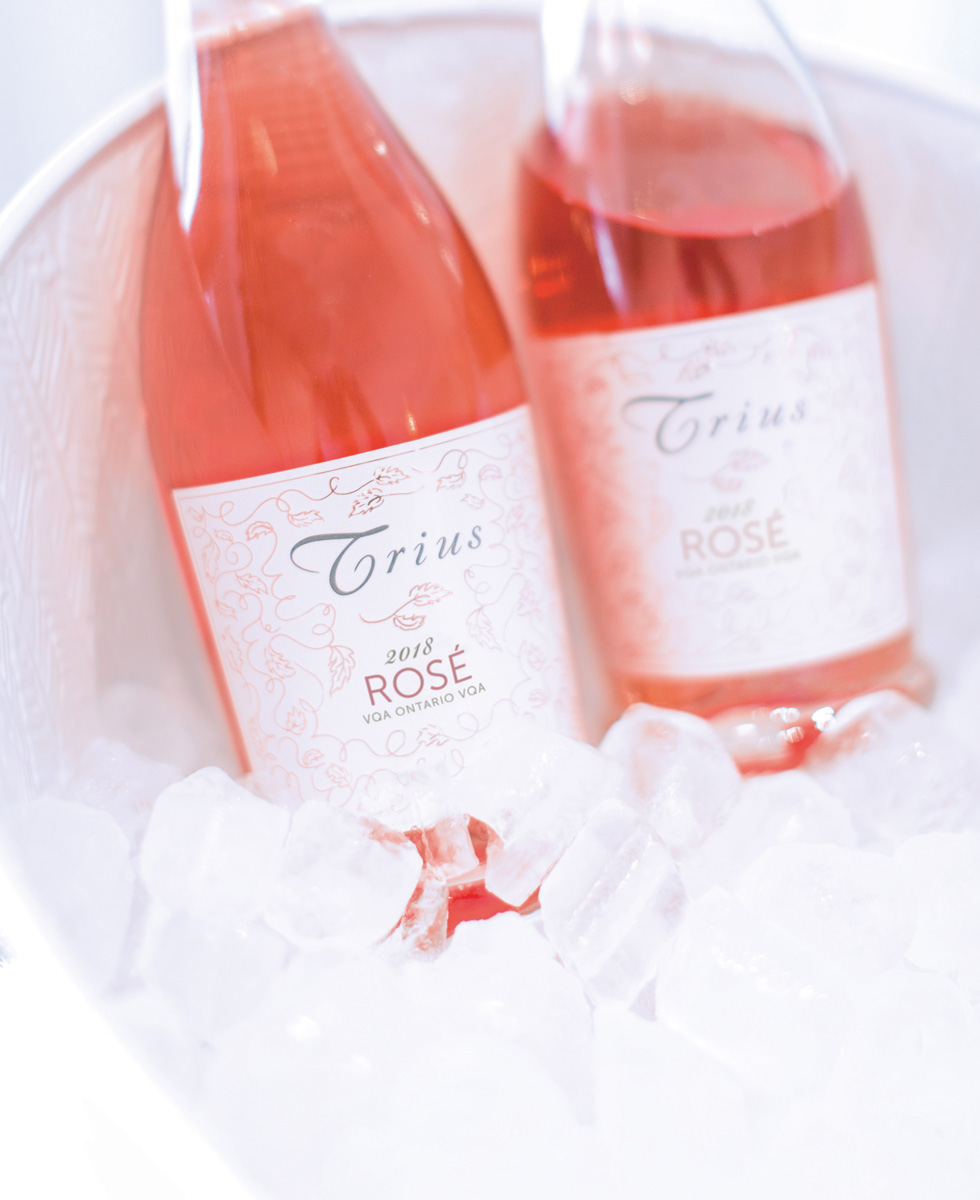
Ontario Wine Culture

There’s a gradient of shades and styles of Ontario rosé to suit the rainbow of occasions and tastes of Ontarians. istockphoto.com photo
From the wall of pink at the LCBO signaling summer, to the “rosé all day” marketing slogans, to the proliferation of rosé made in our own backyard—it feels like rosé’s time is now.
But marketing and a production boom alone doesn’t allow you to ascend to the summer wine throne. Many Ontario winemakers are taking rosé as seriously as their top wines, focusing on growing the right grapes in the right locations to make the best rosé. So don’t expect it to give-up its crown any time soon.
“Niagara has the perfect building blocks for great rosé,” says Ilya Senchuk, owner and winemaker at Leaning Post Wines. “We have a cool climate with grape varieties—Gamay, Pinot Noir and Cabernet Franc—that make delicious rosé. The wines have natural high acidity and fresh fruit that many warmer winemaking regions would love to have.”
The variety of grapes grown for rosé in Ontario—Merlot and Syrah are used as well—gives winemakers a Lego box of choices to craft their rosés ensuring a diversity of styles and greater choice for consumers. They’re taking advantage of it crafting everything from extra dry pale-salmon single vineyard numbers, to vivid raspberry-hued blends as complex and versatile as your favourite red.

Available virtually everywhere Malivoire’s top-selling Ladybug continues to be a benchmark and perennial favourite of Ontario wine lovers. Michael Di Caro photo
Winemaker Shiraz Mottiar embraces empowering wine lovers with choice and a wine portfolio that includes four rosés, three still and one sparkling. “At Malivoire we now produce more rosé than red or white wine,” he says. “It’s a big part of our winery’s identity.” They’ve built the province’s largest rosé portfolio and a loyal following for all styles, from the easy-drinking Ladybug to the layered and savoury single vineyard Moira rosé.
Sometimes I feel like a red wine and sometimes a white, but I always want a rosé.
Craig McDonald, vice-president, winemaking with Andrew Peller Limited, notes that his properties are finding a similar market for very different styles of rosé. While the Trius offering is juicy and gluggable, Thirty Bench is producing a deeper, more age-able style of rosé and Peller crafts a version of the quintessential pale and dry Provençal summer sipper. Gone are the days of one rosé to please all. There’s quite literally an Ontario rosé for everyone.
This diversity is what Senchuck terms rosé’s “populist and interesting” personality, which also makes it an ideal choice for foodies and sommeliers looking for more diverse food pairing options. Many rosés are made like white wines they so they maintain similar qualities like bright acidity and freshness along with lots of fruit that pairs beautifully with lighter summer fare. Rosés can also be made in the saignée method, “bleeding” off a portion of red wine juice, which gives them the tannins and structure to partner with meat and richer foods.
As the versatility of rosé becomes better known it is no longer just a summer wine, but a great option all year round. MacDonald sums it up: “It’s part of a natural evolution. We are always a bit behind Europe, where rosé has always been a more serious wine, and we are just now discovering our own great rosés. For me personally it is a go-to wine; sometimes I feel like a red wine and sometimes a white, but I always want a rosé.”

Trius Rosé 2018. Supplied photo
• Trius Rosé 2018
(Niagara, $18) A blend of Gamay, Pinot Noir and Syrah with a touch of Pinot Meunier. Bright notes of wild strawberry, pink grapefruit and peach from Gamay and Pinot and a slight spicy finish from the Syrah. Plus it’s wearing the prettiest packaging you will find.
• Malivoire Ladybug Rosé 2018
(Niagara, $17) Made from Cabernet Franc, Pinot Noir and Gamay this crowd pleaser is ripe, fruity and dry with some herbal notes, available at virtually any LCBO. The Beamsville winery also has two other paler shades of rosé in its line-up made from 100% Pinot Noir: the 2018 Moira Rosé ($25) and 2018 Vivant ($20). The first is made from its top vineyard and is more floral with delicate, savoury notes, while the latter is more fruit-forward with fresh strawberry and cranberry on the palate.
• Leaning Post Rosé 2018
($20) Mostly Pinot Noir with a bit of Cabernet Franc and Cabernet Sauvignon, balancing the earthy, leafy aspects of Pinot with the brighter fruit from the Cabs. Winery only and with 800 cases produced it goes fast, but look for this rosé on restaurant wine list— it’s popular amongst sommeliers.

Anjana Viswanatha is a certificated sommelier who, after a 15-year career in communications, quickly distinguished herself at top Canadian restaurants Canoe and Alo. Anjana is the sommelier and general manager at Toronto restaurant Bacchanal. She also runs Wednesday Night Wine offering wine education and events and teaches at George Brown College.

Anjana Viswanatha is a certificated sommelier who, after a 15-year career in communications, quickly distinguished herself at top Canadian restaurants Canoe and Alo. Anjana is the sommelier and general manager at Toronto restaurant Bacchanal. She also runs Wednesday Night Wine offering wine education and events and teaches at George Brown College.
© 2024 Vitis Magazine